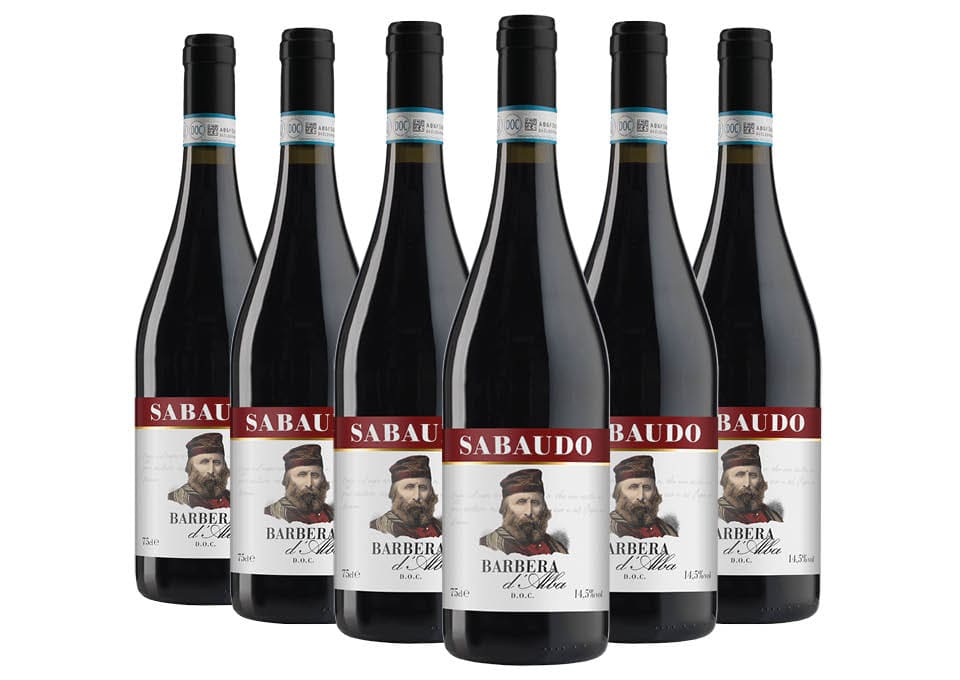Barbera
Barbera is a grape variety widespread above all in Northern Italy. The areas of choice for the Barbera grape are Piedmont and Lombardy: in Piedmont it is above all the areas of Asti, Alba and Monferrato that contribute to the success of Barbera, which is also connoted for women, such as Barbera. Barbera grapes are in fact at the center of two important appellations such as that relating to Barbera d'Asti DOCG with at least 90%, Barbera del Monferrato Superiore DOCG with at least 85% of Barbera, Barbera d'Alba DOC with at least 85% of Barbera. From the lands of lower Piedmont, Barbera then spread to the area of the Tortona hills, Oltrepò Pavese, up to the Piacentino valleys. Due to its generous and vigorous nature, Barbera was then planted in other areas of the peninsula and still today we find it present in Umbria, Marche, Abruzzo, Campania, Apulia, Basilicata and Calabria. Like many European varieties, Barbera has followed the migratory flows that have brought it to some countries of the new world such as Australia, Argentina and to the United States in particular to California. Wine once considered to belong by right to the peasant culture and very edgy by virtue of high levels of acidity, today Barbera is vinified with avant-garde techniques that reduce its disruptive character to create wines for immediate consumption or with greater freshness as more cutlery and complex variants. With historical evidence that accredits the presence of the vine since the eighteenth century and with the enormous diffusion it has enjoyed in recent times, Barbera is no longer in the shadow of Nebbiolo e Grignolino as it can boast its own market, defined above all by the interest of the public who seems to have discovered and exploited its potential. This is also due to the fact that the Barbera grape has good vigor and is very productive: Above all this second characteristic is the basis of its success and its diffusion, so much so that together with Sangiovese, it remains today the most cultivated red grape variety in Italy. The grape produces quite large and heavy clusters, with dark blackish blueberries covered with abundant bloom. Barbera wine has very particular and recognizable characteristics: the color is ruby red with violet reflections. The nose expresses intense aromas with vinous notes, fresh aromas of ripe red fruit, violets and spices. The sip is dominated by an acidity that refreshes the palate in such an overwhelming way as to become the real distinctive feature of the wine. Among the most successful combinations we find the dishes of Piedmontese cuisine such as mixed boiled meats, cooked meats, agnolotti with meat sauce, cotechini, polenta and sausages, all foods that benefit from the acid freshness of Barbera to balance a certain fatness.
Barbera d'Asti and Barbera d'Alba
Barbera d'Asti DOCG and Barbera d'Alba DOC wines are produced in different municipalities and correspond to two different appellations. Despite being a few tens of kilometers away, the cities of Asti and Alba present two wines made from Barbera grapes with slightly different characteristics. Barbera d'Alba DOC, also present in the Superiore version, is usually vinified in purity even if it is not unusual to add a small percentage of Nebbiolo (maximum 15%). For Barbera d'Asti DOCG the percentage of Barbera grapes must be 90% while the grapes must come from land located between the provinces of Asti and Alessandria. For the mention 'Superiore' the Barbera d'Asti DOCG includes the mention of the name of the vineyard and respects a minimum aging of 14 months, of which at least 6 in wooden barrels.
What are the characteristics of Barbera wine?
Barbera wine has a medium or high intensity ruby red color. Floral and ripe fruit aromas emerge on the nose, while on the palate they are finished with a pleasant spiciness that suggests a medium or full body, good structure and distinct tannins. The finish can be medium or long.
What are the characteristics of the Barbera grape?
The Barbera grape has a medium, pentagonal, five-lobed leaf and has a compact pyramidal cluster with medium-sized berries, a medium-thick and bluish skin.
How many alcoholic degrees does Barbera wine reach?
Barbera d'Asti DOCG must have a minimum alcohol content of 12%. Barbera d'Alba DOC can have a minimum alcohol content of 11%.


















